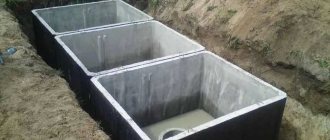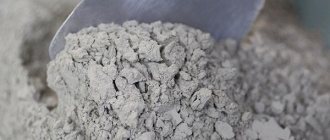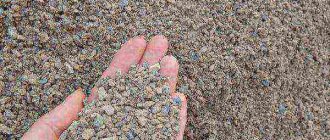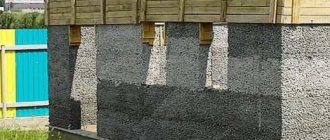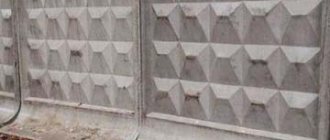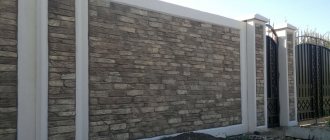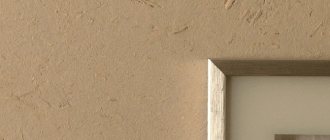Abstract Culverts are one of the most numerous categories of artificial structures on roads of both regional and federal significance. These engineering structures are located in the body of a highway or railway embankment and provide safe drainage of water flowing to the roadbed. Thanks to culverts, the road drainage system ensures a constant favorable moisture regime for the soil bases of road pavements and prevents erosion of the road embankment.
In modern road construction, two types of culverts are most widespread: those made of corrugated metal and reinforced concrete from prefabricated elements. To increase the throughput without increasing the height of the embankment, multi-point pipes are installed from small pipes laid side by side, which allows the use of structures with a diameter of up to 3 meters. In our country, a significant part of culverts is a structure of reinforced concrete links not fastened to each other, most often of a circular cross-section, with a diameter of up to 3 meters, which are used in various climatic conditions.
During operation, the structure is affected by static and dynamic loads (from the weight of the embankment and vehicles passing along the road), as well as temperature changes and melt and rain water, streams and small rivers directly flowing through the pipe. All this, as well as the geological factor (earthquakes, movements and vibration of the soil) or initially incorrect installation of the pipe, lead to its inevitable destruction. This process also occurs during periods of major road repairs, when the asphalt concrete covering is removed from the area above the pipe and heavy equipment is moved directly along the gravel cushion of the embankment. The result is a decrease or partial loss of the load-bearing capacity of the pipe links. In addition, over time, the installed reinforced concrete sections of the culvert tend to shift in the horizontal and vertical directions under the influence of various types of loads, which leads to the formation of gaps and differences between them. Variations reduce the effective cross-section of the pipe, reducing throughput and leading to silting. In flood conditions, the presence of gaps between the pipe links leads to significant erosion, leaving voids in the embankment, which is fraught with the collapse of the subgrade and road pavement, and in such a situation it is impossible to talk about the possibility of operating the road section as a whole. The traditional effective solution to this problem is to dismantle the embankment and dismantle the pipe, followed by the construction of a new one, but this method requires the destruction of the overlying road surface. In addition, on federal highways, in order to carry out such work, it is necessary to first create a temporary detour, which also entails significant time and material investments. The need to optimize costs for the repair and reconstruction of highways of federal and regional importance is pushing road services to use modern alternative methods for restoring artificial structures. One of these methods is sleeving - pulling a plastic or metal pipe of a smaller cross-section inside the structure being repaired. At first glance, this technology seems effective, but all functionality and structural load ultimately transfer to the inner pipe, the diameter of which is less than the design value, which over time can lead to deformation or even erosion of the embankment. In addition, the plastic pipe used for lining does not have sufficient load-bearing capacity and cannot significantly strengthen the structure being restored. Reducing the pipe cross-section can be avoided by using another technology - repair using the “stocking” or polymer sleeve method. This method allows you to restore local, heavily damaged areas of the structure and repeat the existing profile of the structure without reducing its internal diameter. However, this technology is not only expensive, but also does not in any way affect the load-bearing capacity of the structure, and it is the reduction in the load-bearing capacity of the culvert on the road section that is the critical factor leading to its destruction. Thus, none of the methods described above is optimal and does not fully solve the problem of effective, fast and low-cost repair of artificial structures on roads. To eliminate this problem, specialists from TechPolymer Group of Companies have developed a system for repairing culverts based on the V-LOCK anchor sheet for structures with a diameter of 1.2 meters or more, located in road embankments more than 2 meters high. The technology consists of restoring the load-bearing capacity of a structure using concreting using permanent polymer formwork. The TechPolymer culvert repair system consists of several stages:
- Cleaning the internal surface of the culvertErection of the reinforcement frame (metal guides and fiberglass winding)Installation and welding of the V-LOCK anchor sheetDeployment of pneumatic formworkPouring mortar and grouting the structureRemoving a high-pressure cylinder and assessing the quality of welded jointsControl of uniformity of filling with mortar
The proposed technology makes it possible to repair a culvert in a short time without preparing individual formwork, providing a designed service life of the structure within 4-5 years with the possibility of increasing it after an inspection. Opinion of Candidate of Technical Sciences, Associate Professor of the Department of Road Design of the Federal State Budgetary Educational Institution of Higher Education "SibADI"
Levashov Grigory Mikhailovich
It is difficult to overestimate the impact of the road drainage system not only on the transport and operational qualities of the highway, but also on ensuring the transport safety of our country as a whole. Like all artificial objects, it needs not only proper operation, but also periodic and major repairs. As we know, the cost of installing culverts is significant and can range from 5% to 15% of the cost of constructing a section of a highway. Undoubtedly, the road industry needs modern technologies for repairing reinforced concrete culverts, one of which is rehabilitation using a polymer anchor sheet. The use of this technology allows us to reduce the estimated cost and timing of work, as well as increase the service life of reinforced concrete structures of culverts of round, rectangular and arched sections. The technology for repairing culverts based on the V-LOCK anchor sheet can be assessed not only as the most economical, but also as the most promising innovation for performing repair work of this kind. In comparison with previously described methods, the TechPolymer culvert restoration system has a number of significant advantages :
Increased load-bearing capacity. After the work, a solid pipe is created that compensates for the damage present in the links of the structure being sanitized and distributes the load from the destroyed links to nearby ones.
Cracks and exposed reinforcement are cemented, which strengthens the structure and increases its service life. Maximum useful cross-section. The system only slightly reduces the diameter of the culvert, leaving it within the required design values. Controlled filling with mortar. Unlike, for example, lining, this method allows check that the space between the formwork and the pipe being sanitized is evenly filled with mortar. Such quality control is important as it helps avoid the formation of voids and increase the reliability of the structure. Elimination of cavities in the embankment. Displacement of reinforced concrete culvert links leads to the formation of gaps between them, through which soil can crumble into the structure, forming cavities in the road embankment that reduce its stability . The TechPolymer system ensures that these cavities are filled with cement mortar, which eliminates the risk of damage to the embankment. Price. This technology is the most economically justified of all those offered on the market today.
In conclusion, it should be noted that the need to improve the durability and reliability of existing artificial structures in road construction is indisputable. In particular, high-quality repairs of culverts can significantly extend the life of the safe operation of an artificial structure, and the choice of the optimal method of such repairs, for example, a rehabilitation system using the V-LOCK anchor sheet, will ensure the technological and economic efficiency of the process.
Culverts are used to drain small runoff water and pass it under the road. Their use is more expedient than the construction of a bridge.
General concept
Culverts are used to pass water from the upper part of roads to the lower part. These include culverts, bridges, and drainage systems. The latter are used to pass various channels under the road surface.
Culverts are used in cases where it is necessary to pass small drainage systems under the road (streams, drainage of water after rain or melting snow, and so on). The passage of water through pipes can be carried out continuously or periodically. The passage of livestock or the passage of vehicles is sometimes organized through such structures.
The installation of culverts does not require narrowing the roadway or changing the type of road surface. A backfill is placed over the structure. The thickness of the layer of poured soil reduces the pressure on the structure from cars and softens their impact.
Using pipes to pass water has its advantages:
- The pipes are installed without damaging the subgrade.
- Installing pipes is cheaper than building a bridge.
- When the thickness of the backfill layer is more than 2 m, the influence of temporary loads from passing vehicles on the structure is minimized.
Pipe sizes
The diameter of the culvert depends on its length:
- If the length of the pipe does not exceed 2-3 m and the height of the embankment is less than 7.5 m, then the pipe opening is chosen equal to 100-150 cm.
- For an embankment up to 1.5 m, the diameter should be 75 cm.
- The pipes within the ramps are 50 cm in diameter.
Under roads of categories 2-4, it is allowed to use culverts with a diameter of 100 cm and a length of up to 30 m. If the diameter is 75 cm, then the length of the pipe should not be more than 15 m.
Drainage device
A layer of crushed stone and sand enters the drainage system of the ditch through the entrance. They cover the top of the drain pipe, the underlying layer at its bottom, as well as the side protective zones. It is arranged so that water does not seep through the road surface material, but only passes through the pipe. To form protective zones along the ditch, pits 50 cm wide and 60 cm deep are dug. They are filled with crushed stone of the same fraction.
Classification
Culverts are classified according to several parameters.
Depending on the material from which they are made:
- Polymer (from polymer concrete, polyvinyl chloride and polyethylene).
There are several types of pipes depending on the cross-sectional shape:
According to the operating principle of the section:
There may be one, two or several points in the cross-section of the pipes.
Production technology
Enterprises that produce such pipes adhere to a number of important rules:
- Each component element (link) of the pipe must undergo the necessary testing for compliance with GOST standards. According to GOST, the length of the link can have a deviation from 0 to 10 mm. The wall thickness can also vary slightly - from 5 to 10 mm. Other indicators may have an error of up to 10 mm;
- The joints of all elements must be cleared of sagging and splashes of concrete that could have formed during the production process. The cleanliness of the joints is a necessary parameter that affects the tightness of the connection of the links;
- The sorting of individual elements must be carried out in accordance with the brand. After this, all sorted elements must be moved to one place.
Manufactured reinforced concrete pipes are checked according to many parameters, which must comply with GOST standards
In this way, production finishing and sorting of individual products for culverts is carried out.
Note! Transportation of these elements to the place where installation work will take place is carried out in accordance with the necessary standards to prevent damage to the product. All products are delivered to the installation site in the same form in which they were delivered to the warehouse after sorting.
Before installation, preparatory measures are required.
Basic pipe elements and their installation
Culverts consist of several elements:
Thanks to the presence of caps, whirlpools and turbulences do not form in the pipe, and water flows out more slowly.
Their presence prevents flowing water from eroding the embankment and undermining the foundation. There are several types of caps: Portal, which are constructed in the form of a retaining wall perpendicular to the pipe. This is the simplest design, but it has its drawbacks. They do not ensure smooth flow of water. Therefore, its use is recommended in cases with a small amount of water flowing at low speed. Portal heads are used for pipes with a diameter of 50-75 cm. Flared.
In addition to the wall, they have two flaps that form a bell. The flaps are located at an angle of 30 degrees to the pipe. Due to this, the flow of water gradually narrows. Collar type, in which the outermost element is cut at the same angle as the embankment. A protective collar is installed along the contour. The streamlined sections gradually narrow, which creates good conditions for water flow. The pressure on the ground is distributed evenly due to the foundation on which the pipe is laid.
This also prevents the movement of individual elements of the structure. The following types of foundation exist: Without a foundation (natural foundation). A soil cushion created artificially. From individual reinforced concrete elements. The choice of foundation type depends on the diameter of the pipe, the height of the embankment and geological conditions. The culvert is located strictly perpendicular road axis. This gives the minimum pipe length. In some cases, it is recommended to install the structure in the direction in which the flow flows. This reduces the likelihood of whirlpools occurring.
In such cases, the construction of culverts in other directions is allowed. Culverts under embankments can act as a unique alternative to bridges. Externally, the structure of such pipes is similar to tunnels passing through road embankments. Metal corrugated culverts are widely used in road construction. The dimensions of the manufactured pipes allow them to be used for draining the flow of melt or rainwater, and for installing a drainage system, as well as for arranging underground passages.
Of course, instead of drainage, it is possible to build a full-fledged bridge, but in the case of a low height of the roadway, the only correct solution will be the installation of drainage. Diagram of the elements of a reinforced concrete rectangular culvert. Types and characteristics of culverts The modern market offers a wide range of pipes for creating culverts. The basis for the classification of this assortment is the principle of dividing products according to the type of construction material used. The most popular today are reinforced concrete culverts, plastic culvert-type pipes and metal corrugated pipes for passing water. Reinforced concrete culverts The advantage of such pipes is the possibility of their manufacture right at the site of laying the road. Their independent production involves the process of pouring concrete mortar into reinforced formwork. This procedure takes quite a lot of time, therefore, for the installation of water pipelines, reinforced concrete and concrete pipes arrive at the construction site in a form ready for use.
They are particularly durable and can withstand seismic loads up to 9 points. Plastic pipes Installation diagram of a round culvert. The advantage of plastic culverts is their ability to resist high external loads. But their installation requires strengthening the canvas over the channel by constructing a concrete arch, for which the outer side of the pipe is used as formwork. Partial unloading of the plastic pipe is also realized using metal boxes (gabions) filled with large boulders. Thus, a layered structure with a stable core and a reliable external part can be used for decades. A plastic water conduit made from polymer pipes can withstand soil movements much more easily than a rigid structure made of concrete. Metal pipes and SMGK If we consider the use of metal culverts from the point of view of strength calculations, then this option can qualify for perfect solution to the problem. Of course, the ability of metal to withstand external loads well is the main advantage of metal pipes, but this advantage is practically reduced to zero by the high susceptibility of the metal to corrosion damage.
Therefore, it is customary to use ordinary metal pipes as a temporary solution to the problem. In particular, they are used for a one-time puncture of the road surface to drain the surrounding area. Such punctures are very relevant in situations where it is impossible to repair the culverts of the main water pipeline and its operation due to clogging or even destruction. This drainage system helps relieve water levels and makes it possible to clear or repair the main water main under the road. In addition, metal pipes can be used not only as a water conduit, but also as a kind of case that protects the internal pipeline. The best option for using metal temporary pipes is a casing product used for reinforcing boreholes (their walls). Diagram of the above-foundation parts of the middle parts of the pipes. To install permanent culverts under the road, special prefabricated metal corrugated structures (SMGK) are used.
Based on the classical definition, such products do not belong to the category of pipes, since metal corrugated sheets are converted into a prefabricated structure right at the site of the construction of the water pipeline near the road. Non-standard metal corrugated structures and tunnels made from them are endowed with a number of advantages that are not available for culverts created from pipes. These advantages are based on the fact that corrugated metal systems during the assembly process can take on a variety of complex shapes, which are impossible for ordinary pipes to transform into, and the term their service life reaches 50-60 years, and besides, corrugated metal structures are 25-30% cheaper than their concrete counterparts and, despite this, are endowed with increased seismic resistance. The entire process of installing culverts under the road is divided into several stages: digging a pit; laying the foundation; installation of pipes; arrangement of the road embankment. So, the first stage involves digging a pit, the dimensions of which are determined by the parameters of the base of the water pipeline. The type of soil that must support a massive structure can also play an important role here.
The arrangement of the slopes of the pit will depend on the type of soil. The pit is dug according to the classical scheme, that is, first the top fertile layer is removed, then the first stage is excavated, soil is again excavated at the second level, etc. The depth of the pit must necessarily reach the freezing level soil.
Otherwise, the water pipeline system may be deformed during soil heaving. To remove moisture from the pit, a drainage system from trenches or a water pump is used. Since throughput water pipelines under the road are usually built in fairly wet areas, a well-designed drainage system is a prerequisite for their successful operation .Scheme of trenchless pipe laying. The walls of the pit and the nearby embankment are strengthened with special modules - gabions, the structure of which consists of a metal mesh filled with stones. To strengthen the structure, an additional layer of waterproofing is installed under the gabions. At the second stage, a foundation is laid, for which a specially made sand and gravel backfill acts as a support. The need to lay bedding is due to the fact that it guarantees the preservation of the integrity of the structure in the event of exposure to soil deformation during heaving. The standard foundations for laying culverts are block and monolithic. A block foundation is laid starting with a block under the pipe head, which goes 25 deep into the ground -30 cm below the soil freezing mark. After this, the remaining blocks are mounted on the sand and gravel bed, and the height differences between the platforms are filled with sand and gravel backfill.
Structural elements begin to be installed from the exit head, gradually moving to the input section. Large differences in heights in the structural elements for support are insured by installing piles. The advantage of installing a block foundation is the speed of work. A monolithic foundation is laid in classic formwork, mounted on top of a waterproofing layer. The pouring of such a foundation is carried out in one pass, for which the volume of the foundation is carefully calculated. During pouring, only removable formwork is used, which is removed after the cement hardens. Diagram of the types of pipe heads. The main advantage of monolithic foundation structures is their high strength. With high-quality reinforcement, such a foundation can withstand both seismic vibrations and heaving loads of the road soil. At the next stage after laying the foundation, pipe installation begins.
The edge of the subgrade is installed, the outlet heads of the pipes are mounted, then SMGK units or arched elements of reinforced concrete pipes are laid on top of the foundation. The space between the foundation and the walls of the pipe is filled with a sand-gravel mixture with the addition of Portland cement. SMGK are fastened together with rivets or latches; special cement screed. Elements of a reinforced concrete tunnel are also fixed using cement screeds. Arched structures are mounted on slabs, even without laying bedding. At the last stage, after installing the reinforcing screed, the structure is strengthened with concrete edges or gabions and covered with a 2-, 4- or 6-meter layer of roadway soil (depending on the strength of the pipe). Share useful information article: Similar articles: Contents: Culverts located under the road are something of an alternative to bridges, so if there is no need for the latter, you can use such a replacement.
In addition, in some situations, building a bridge is simply impossible - for example, if the road is located too low. The design of a culvert is a channel passing through a road embankment. To construct a culvert, pipes are used of such a diameter that it is sufficient to transport a large volume of atmospheric precipitation. In addition, such pipes are often used to create large drainage systems and underground passages. This article will discuss culverts and the features of their use.
Construction of pits
Usually, fastenings are not used when preparing pits for laying such products. In this case, the stability of the walls cannot be ensured only if the soil is water-saturated and the volume of water inflow in it is significant. Solving the problem will require excavating the soil and protecting it with a support structure.
In addition, fastening of the pit is provided when laying culverts is carried out at a close distance from the buildings in use.
The characteristics of the pit are affected by the following nuances:
- When designing work, the technology for developing an object and its outline depends on the structural features of the pipe, as well as on the characteristics of the foundation soil.
- When calculating the steepness of slopes, the depth of the pit and the condition of the existing soils are taken into account.
- If it is necessary to apply a layer of waterproofing to the pipes or perform other types of work during which workers will be in the pit, the vertically located wall of the object must be located at a distance of at least 70 centimeters from the side surface of the foundation. When such events are not planned, this parameter can be reduced to 10 centimeters.
- With the flameless concreting method, the parameters of the pit must correspond to the parameters of the foundation.
- When constructing a pit that has slopes, the distance from their base to the foundation cannot be less than 30 centimeters.
The dimensions of the pit should be compared with the capabilities of special excavation equipment. When constructing pits, it is necessary to prevent them from filling with water—surface or groundwater—to do this, small earthen ramparts are placed along their perimeter.
If the pipe is constructed in places with a constant water flow, dams are built, or the river bed is diverted to the side by laying ditches.
You can remove water from the pit using one of the following methods:
- In its lower part, an outlet is constructed into a ditch - this method is used when laying slope pipes.
- A mechanical drainage system is installed. To do this, a fenced pit is installed in the lower part, and water is pumped out of it with a pump.
Reinforced concrete culverts
One of the main advantages of reinforced concrete structures for water drainage is the ability to create them at the place where they will be installed. The arrangement process in this case involves the installation of reinforced formwork into which the concrete solution will be poured.
The quality described above can be called quite useful, but it has a serious drawback - a reinforced concrete culvert under the road takes a very long time to install.
Of course, there is a solution to this problem, which consists in purchasing ready-made reinforced concrete structures and delivering them to the installation site. The main quality of such a material is its ability to withstand the effects of various external factors.
Foundation arrangement
The construction of a foundation for laying pipes using prefabricated elements is carried out in a certain order:
- The foundation blocks of the heads are laid, bringing them to the bottom of the base of the pipe.
- The sinuses of the foundations of the heads are filled up until an equal level is obtained.
- The cavities of the head foundation are backfilled using local soil.
- In places where foundations meet different laying depths, a mixture of sand with gravel or crushed stone is poured.
- The backfill is first compacted layer by layer and then cement mortar is poured.
- The creation of foundations for the heads and the sectional laying of the pipe foundation are done simultaneously.
Work begins from the location of the outlet pipe head, moving towards the inlet head.
- The monolithic foundation is built in stages:
- Formwork is made and installed.
- Prepare the concrete mixture and pour it.
- Take care of the laid concrete layer.
- The formwork is dismantled.
- Sinuses fall asleep.
When arranging foundations of a prefabricated monolithic type, first a cushion or base is prepared and formwork is placed in the intersection joints. The existing empty spaces are filled with concrete mixture. In areas with weak soils, a pile foundation is built.
After completing the arrangement of the base and filling the sinuses, they begin laying the prefabricated pipe heads and body.
Self-propelled cranes are needed to lay prefabricated structures such as steel culverts. The sequence and order of installation depend on the terrain and the type of structure chosen for the head section.
Plastic Culverts
Various options for polymer products for arranging culverts are a good solution. Plastic pipes can withstand external loads well, but to do this they have to be further strengthened using a concrete arch, which is poured along the outer edge of the pipe, and the weak resistance of concrete to soil movements in this case does not matter at all.
If necessary, you can reduce the load on the system by using special metal boxes filled with stones. A drainage pipe installed under the road in this way combines reliability and durability - the service life of a plastic culvert can reach 50 years.
Preparatory work before installation
At the very beginning, before installing the culvert, a site is selected where construction will subsequently begin. After the required location has been selected, it is cleared of foreign objects (grass, branches, debris, etc.).
Next, all components of the future culvert pipeline are laid out in the correct sequence for subsequent assembly. Before assembly, it is necessary to carry out appropriate markings and determine the axis of the product, as well as the contour of the pit. In addition, before preparatory work, all necessary calculations (including hydraulic calculations) are performed. All this is necessary to ensure that no unforeseen situations arise during the installation process; the normal operation of the culvert pipeline in the future also depends on it.
Metal pipes and SMGK
Metal culverts are a good option for solving the problem of water drainage, but only if you look at it from one side. Metal structures have better strength indicators compared to analogues, but this advantage is completely offset by poor corrosion resistance. Because of this, metal pipes are used to construct culverts only temporarily.
However, there is another use for metal products. They are often used to puncture road surfaces. The fact is that it is not always possible to repair the water pipeline running under the road, so the pipe is cleared using an external drainage system, which allows for repairs or high-quality cleaning of the system.
A good solution is to use metal pipes as an external protective casing to protect the main pipeline. Typically, pipes used for reinforcing the walls of boreholes are used for these purposes. To create a reliable and high-quality culvert, it is best to use SMGC - prefabricated metal corrugated structures.
According to the general classification, such structures are not ordinary pipes - a complete system becomes such only in the place where it is necessary to install culverts. SMCs have a lot of positive qualities that simple pipes lack. The main advantage of a prefabricated structure is the possibility of constructing complex structures that can last for several decades and at the same time calmly survive the effects of seismic shifts. Corrugated road pipe, among other things, costs almost a third less than alternative options.
Gabion structures
When constructing stabilizing and retaining, water drainage and culvert objects, retaining walls and local treatment structures of the road and bridge type, gabion products have become widely in demand.
When already constructed, such an object looks like a culvert of a certain diameter, reinforced with gabions, which have gained popularity due to the following positive qualities:
- strength;
- flexibility and resistance to stress;
- resistance to the negative effects of precipitation and humid air;
- having the ability to drain, which does not require additional costs for installing a special design and a return filter;
- simple construction work;
- simplicity, reliability and durability of operation;
- aesthetic appearance and environmental safety;
- low time and financial costs for construction;
- Possibility of operation with structures of different types.
Carrying out work using culvert pipe products must be carried out especially carefully, in compliance with building codes and requirements, since their violation leads to the destruction of both the pipe and the road surface under which it is laid.
Installation of culverts under the road
The technology for constructing drainage channels under the road includes several stages:
- Preparing the pit. Pouring the foundation. Laying the pipeline. Arrangement of the road embankment.
The first step is to dig a pit, the dimensions of which coincide with those calculated during the design.
It is also important to take into account the soil that prevails on the site - unsuitable soil may prevent the construction of a heavy structure. In addition, the type of soil directly affects how the walls of the pit will be constructed.

